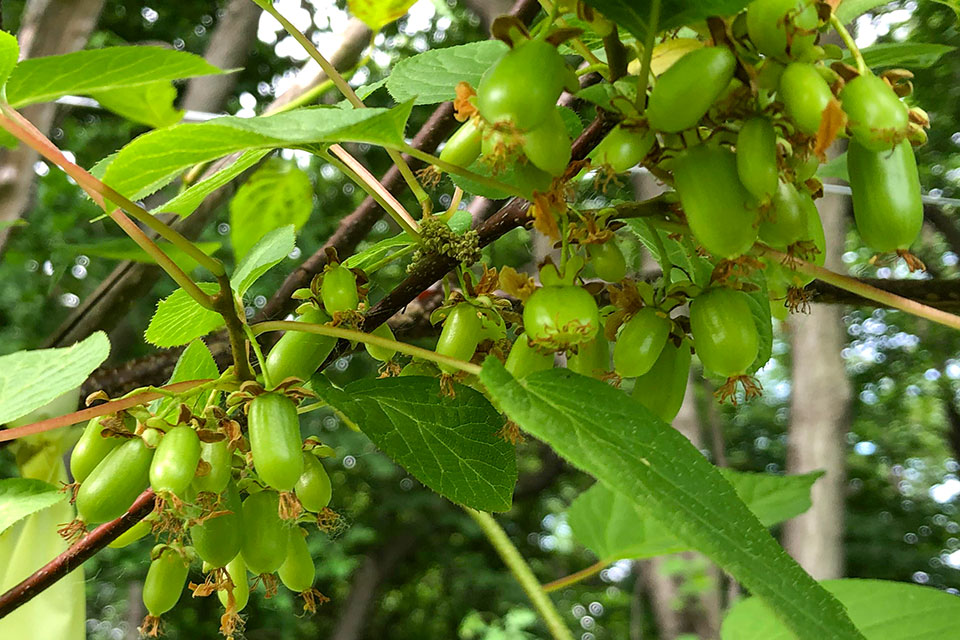Do Your Homework if You Want to Grow Alternative Crops

Looking for new alternative crops to grow and for us to cover? Kiwiberries might be one to consider. Photo by Seth Wannemuehler, University of Minnesota
Back in the days when we were freely traveling about the country attending industry conferences, I would often find myself at the end of an evening talking with growers. I would sometimes ask — and will again, one day soon — what they would like to see more of in our magazine, newsletter, and website. Interestingly, the younger growers who answered would often say they would like coverage of alternative crops.
A few years of getting lousy prices for what you grow, especially because of factors well outside of your control, might have you looking around for other crops to grow. Perfectly understandable. And if you’re young, you’re particularly interested in what’s new, especially when the products made from the crops are associated with young people. I used to be asked about hops, maybe 10 years ago. Then about five years ago, the crop I was asked about most in additionally covering was hemp/cannabis.
We have covered hops a bit — the interest was rather intense there for a while. We found there are a lot of limiting factors, mainly related to rather high barriers in terms of minimum acreage and maximum distance from hop processing facilities. Also, there’s the simple horticultural fact that it’s not a fruit, and neither for that matter is hemp/cannabis. Because of that, our parent company covers the crops in the appropriate venues, hemp in American Vegetable Grower and cannabis in Greenhouse Grower.
Incidentally, all you fruit growers who asked me about hemp, claiming it was going to be a gold mine — and I have to admit, I initially thought it might pan out — might be interested to know the results of last year’s American Vegetable Grower State of the Industry survey. Nearly a quarter of the vegetable growers who responded said they were interested in producing hemp despite some serious headwinds. (As for cannabis, my understanding is that most of the premium crop is grown indoors, hence our coverage in Greenhouse Grower, and would not be a candidate crop for most fruit growers.)
The American Vegetable Grower State of the Industry survey noted, “The industry literally went from zero to 60 overnight (after being legalized in the 2018 Farm Bill), transitioning from a handful of R&D acres across parts of Oregon, Colorado, Kentucky, and North Carolina, to upward of 500,000 acres planted nationwide in 2019.
“Then the bottom fell out as CBD futures prices, both for plant biomass as well as finished oil product, declined. Many growers struggled to even get the plants out of the fields and into processing as the hand labor required to harvest acres upon acres of stout, hardy hemp plants proved a major management issue to overcome.”
So, we won’t be covering hemp in this magazine, but that doesn’t mean we aren’t open to covering alternative crops. In fact, we make a point of doing that in at least one issue each year. We usually focus on fruit crops that aren’t as widely grown, such as some of the berries gaining popularity in the Northeast.
We cover five crop types in every issue: pome fruit, grapes, stone fruit, berries, and nuts.
What crops would you like to see covered? Like all of you, we haven’t been able to attend in-person industry conferences for more than a year now, so we haven’t been able to have impromptu conversations with growers. So, take a minute and shoot us an email. You probably won’t find out the grass is any greener, but it’s always good to be open to new possibilities.









